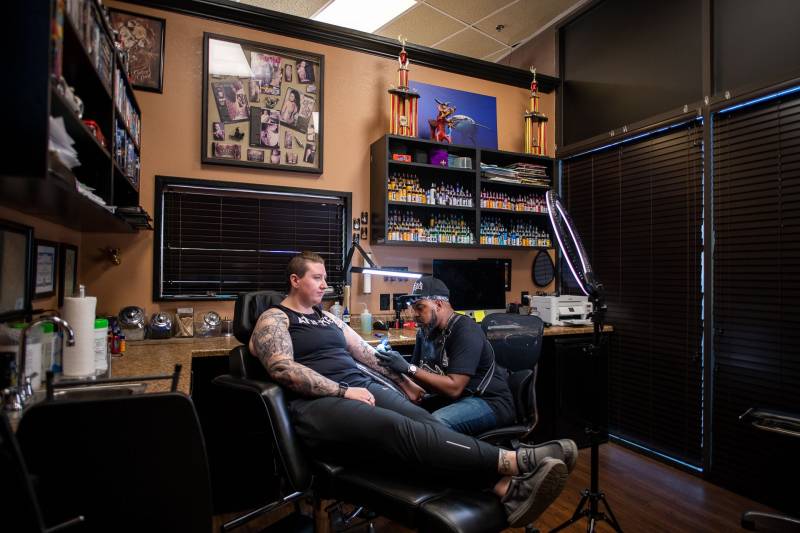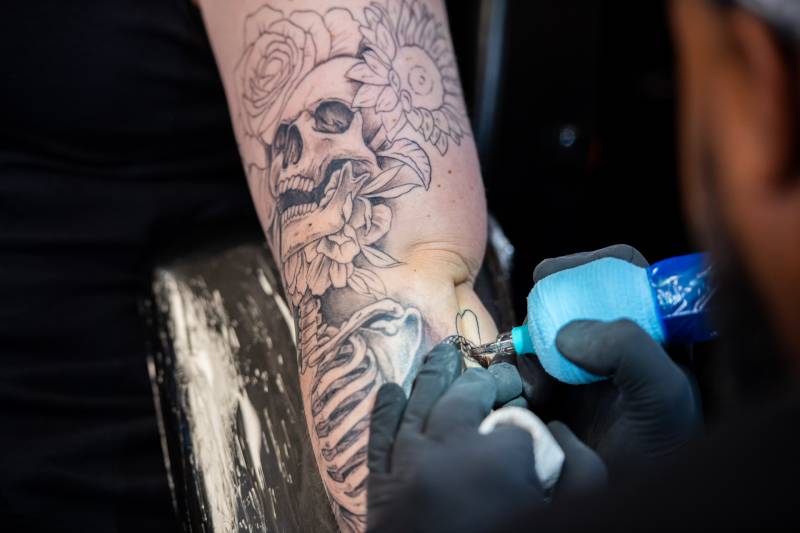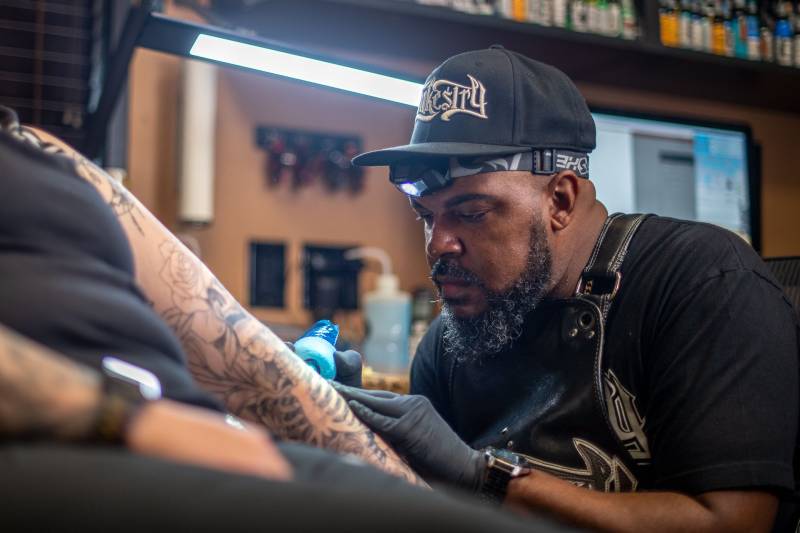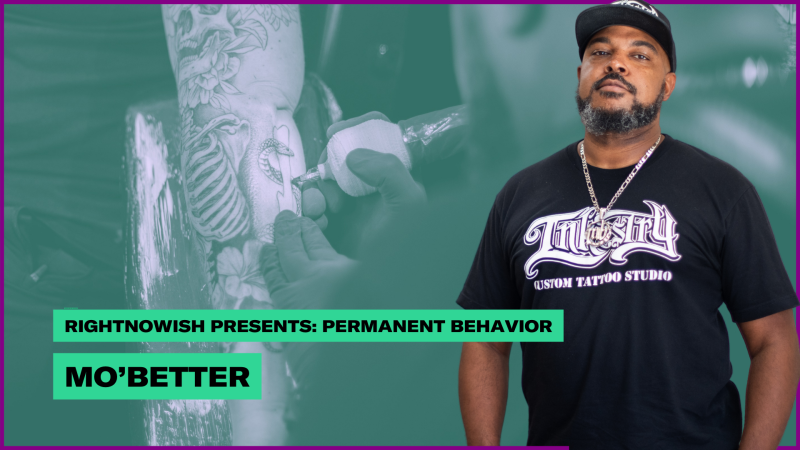“Permanent Behavior: Getting Tatted in the Bay,” is our four-part series, about local tattoo artists. In these stories, we dive into the permanence of ink as it resides on impermanent beings.
“It’s only on you for the rest of your life,” reads the Instagram bio of tattoo artist Shannon Anderson aka Mo’Better.
A widely recognized tattoo artist, he’s done notable pieces on famous athletes and entertainers. But he’s also inked multiple generations of Bay Area families. He’s a self-taught tattoo veteran paving the way for others to traverse an industry that hasn’t been to kind to Black people.

For the past twelve years, Mo’Better’s been the owner of Inkestry Custom Tattoos in Livermore. But before he held a tattoo gun, he was known as a talented airbrush artist, and before that he was a skilled barber. He learned each craft out of necessity. And each craft has earned him money, broadened his following and expanded his community.

All of this experience has led to a wealth of knowledge on the ins-and-outs of tattoo culture in the Bay Area and a profound stance on the ideas of permanence and impermanence when it comes to tattoos.
For the final entry in our series on tattoo culture in the Bay Area, we talk to Mo’ Better about his craft, and his life.

Below are lightly edited excerpts of our conversation with Mo’Better.
Pen: What’s the difference in approach between doing airbrush work and doing tattoo work?
Mo’Better: The only thing with tattooing is I can’t make mistakes. I can’t just go grab another shirt like I can with airbrush. It’s somebody’s skin, you know? So I have to have to think that this is on somebody literally for the rest of their life. That’s why I get so mad at so many people that when they’re like, ‘Oh, I just want to go grab somebody, I don’t care who does it.’ Nah, you should care who does who do it. You should focus a little bit more on like the permanency of the tattoo and think of the longevity of the tattoo.
Pen: I guess tattoo artists catch people when they’re going through some transition in life. And so you are kind of an usher as people go through this gateway of transition. Do you ever feel that way or am I tripping?
Mo’Better: Nah, you not tripping at all. When you’re happy, you get a tattoo. When you’re sad, you get a tattoo. When you get a new job, you get a tattoo. When you lose your job, you get a tattoo. When someone’s born, you get a tattoo. When someone dies, you get a tattoo. No matter what goes on in your life, there’s a reason for you to get a tattoo.
Pen: Why?
Mo’Better: Mental comfort. Different people have different ways of soothing themselves, different ways of coping with different things. And some people like the physical pain of a tattoo. Some people like the emotional attachment of a tattoo.
Sometimes I have to get out of my head because not every tattoo needs to have a meaning. I had a dude that came in one day and he wanted a gerbil on his knee with a bee. The gerbil has sunglasses on, too. And I was like, ‘Why?’ He’s like, ‘Because he’s cool, he’s the bee’s knees. And I’m like, ‘Oh, my God. All right, let’s do this.’ I couldn’t quantify anything to make sense for it. But it came out hella cool.

Rightnowish is an arts and culture podcast produced at KQED. Listen to it wherever you get your podcasts or click the play button at the top of this page and subscribe to the show on NPR One, Spotify, Apple Podcasts, TuneIn, Stitcher or wherever you get your podcasts.


